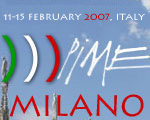
The strange controversy surrounding ITER

by Andrew Teller
ITER, the reader will certainly recall, is the
next step in the world’s endeavour to produce energy by
fusing light nuclei together (see ENS NEWS no 4, Spring 2004).
After protracted discussions, it was decided last year that the
Cadarache site, in the south of France, would house the reactor.
Having reached consensus on the siting, the parties got finally
round to signing the international ITER Agreement, which took
place on 21st November 2006 at the Elysée Palace in Paris.
The event triggered a wave of renewed protests from several environmental
organisations. Many reasons were invoked to justify such opposition,
most of them beside the point or clearly disingenuous. I would
like to examine two of them here, because they look reasonable
enough to convince the uninformed. First, the undertaking having
already suffered countless delays, there would be no reason to
believe that it would one day provide a useful answer to the threat
of global warming. Second, the amount of money required would
deprive the research on Renewable Energy Sources (RES) from much
needed resources and therefore hamper their development. The opponents
of nuclear energy, be it produced by fission or fusion, often
use arguments stemming from genuine concerns. Often also, the
way they make their case is flawed and one does not need much
background information to poke holes in their reasoning. Let me
show here that this is the case indeed for the two abovementioned
objections.
Regarding the time needed to achieve self-sustaining
fusion, it is very easy indeed to cast doubts on the current estimates.
The proponents of fusion have claimed for so long now that success
was thirty years down the road, that The Economist felt entitled
to comment that fusion experts had discovered a new physical constant.
There is however a performance index readily available to assess
the likelihood of the claim. This index, used to measure the performance
of a fusion plasma, is called “triple product”. Any
visitor to the web site of the European Fusion Development Agreement
(EFDA) will easily find the figure 1 below. It shows the progress
of the said triple product. One can see that over the thirty years
between 1970 and 2000, the triple product had increased faster
than the number of transistors on computer chips (the famous Moore
law). To be more specific, the triple product has increased by
a factor of 10,000 in the said thirty years and no more than another
factor of 6 is needed to achieve the value needed for a power
plant. Such figures speak for themselves. They do not provide
any guarantee but in a court, they would provide sufficient new
evidence to have the case reopened. Ignoring it, as the opponents
do, is a convenient way of maintaining a position based on prejudice,
not on facts.
Let us turn now to the purported competition
between fusion and RES research & development (R&D). This
argument is flawed on three counts at least. First, it assumes
that there is only a fixed amount of money around to finance R&D
and that what is allocated to one project must necessarily be
denied to another. Admittedly, ITER is going to cost 10 billion
euro over thirty years. This is quite a lot of money for one single
project. But how does it compare with the overall R&D budgets?
On a yearly basis, 10 billion euro translate into 335 million.
The R&D budgets of the world’s most industrialised countries
amounted in 2003, according the European Commission’s Statistical
Office EUROSTAT, to 585 billion euro. This means that the yearly
requirements of ITER represent less than 0.06% of the overall
yearly R&D expenditures. It is hard to believe that such a
tiny fraction could disrupt all other R&D programmes in a
noticeable way. In particular, for the R&D on renewables to
be affected, it would have to be pushed out of the list of things
to do as a very low priority item. But one can rest assured that
this is not the case, owing to the popularity enjoyed by these
energy sources. Taking this into account, claiming that money
given to ITER will be diverted from RES R&D is therefore tantamount
to saying that RES R&D has very low priority, which is clearly
ludicrous.
Second, the argument is based on the implicit
premise that achieving progress in RES is only a question of throwing
enough money at the problem. This again is misleading. It is true
that R&D can achieve practically anything (not contravening
the laws of physics) given sufficient funding. But this is not
the problem faced by renewables. Their problem is to become cost-effective
and, obviously, spending unlimited amounts of money to make a
process cost-effective can only defeat the purpose. There is no
guarantee that money can buy more than marginal improvements to
the existing processes, leaving them still too costly for comfort.
Third, the argument equates ITER’s rocket science with the
piecemeal engineering applicable to RES. The first type of activity
will attract top scientists; the second one is the province of
people who are content with more mundane technical work. The two
are not interchangeable and the very idea that the world does
not need top scientists brings sinister memories to the mind:
such view was held in the past only under the worst of political
regimes.
As is often the case, the two objections just examined do not
resist scrutiny. Despite all the remaining uncertainties, it is
worth giving ITER a try. The risk of failure, which cannot be
ascertained without the experiment soon to be undertaken, will
not affect much other R&D projects. The rewards of success
on the other hand are simply too good to be overlooked.
Second, the argument is based on the implicit
premise that achieving progress in RES is only a question of throwing
enough money at the problem. This again is misleading. It is true
that R&D can achieve practically anything (not contravening
the laws of physics) given sufficient funding. But this is not
the problem faced by renewables. Their problem is to become cost-effective
and, obviously, spending unlimited amounts of money to make a
process cost-effective can only defeat the purpose. There is no
guarantee that money can buy more than marginal improvements to
the existing processes, leaving them still too costly for comfort.
Third, the argument equates ITER’s rocket science with the
piecemeal engineering applicable to RES. The first type of activity
will attract top scientists; the second one is the province of
people who are content with more mundane technical work. The two
are not interchangeable and the very idea that the world does
not need top scientists brings sinister memories to the mind:
such view was held in the past only under the worst of political
regimes.
As is often the case, the two objections just
examined do not resist scrutiny. Despite all the remaining uncertainties,
it is worth giving ITER a try. The risk of failure, which cannot
be ascertained without the experiment soon to be undertaken, will
not affect much other R&D projects. The rewards of success
on the other hand are simply too good to be overlooked.

Figure 1:The progress of fusion
research through the years, measured by the triple product, which
is an indication of the performance of a fusion plasma. Please
note the logarithmic scale on the vertical axis. F or comparison,
the development of computer chips is indicated. (Courtesy of EFDA)
|







